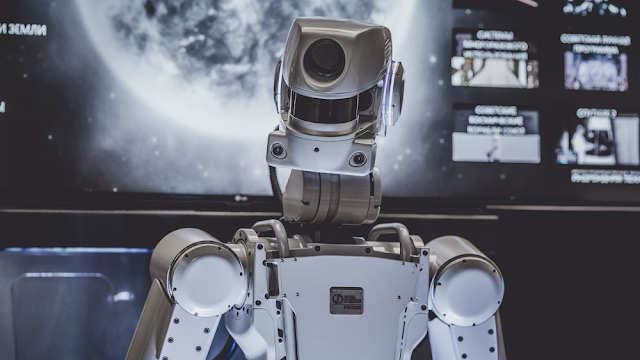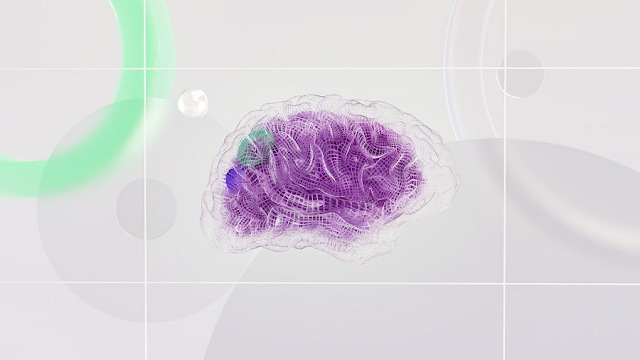
The transformative impact of robotics on neurosurgery has been nothing short of revolutionary. From enhancing precision in complex procedures to reducing recovery times for patients, the integration of robotics into neurosurgical practices marks a significant leap forward in medical technology. This article delves into the current state of robotic technologies in neurosurgery, explores significant case studies, and casts an eye towards future innovations. We'll start by tracing the evolution of these technologies and how they've reshaped neurosurgical procedures.
The Evolution of Neurosurgical Robotics
The journey of robotics in neurosurgery
began with the quest for greater precision and reduced invasiveness. Over the
years, technological advancements have led to the development of sophisticated
robotic systems capable of performing intricate surgeries with a level of
accuracy unattainable by human hands alone. These milestones in robotic
technology have not only enhanced surgical outcomes but have also minimised risks and improved recovery times, marking a new era in
neurosurgical care.
Robotic systems in neurosurgery have
evolved from simple assistive devices to complex platforms that integrate
real-time imaging, advanced sensors, and artificial intelligence. The
integration of these technologies allows surgeons to plan and execute
procedures more effectively. As we continue to witness innovations in this
field, the role of robotics is set to become more central in neurosurgical
operations, promising even greater advancements in patient care.
Exploring Current Robotic Technologies in Neurosurgery
Today's neurosurgical robots are
equipped with capabilities that were once the stuff of science fiction. Systems
like the da Vinci Surgical System and the ROSA Brain Robot exemplify the
integration of high-precision mechanics and real-time imaging which support surgeons in
performing highly delicate procedures. These robots extend the surgeon's
capabilities by enhancing stability and precision during operations.
The real-world application of these
technologies is best illustrated through patient outcomes. For instance,
surgeries performed with these robotic aids have consistently shown reduced
complications and quicker recovery times, underscoring the benefits of robotic
assistance in neurosurgery. However, the adoption of such advanced technology
also brings challenges, including high costs and the need for specialised training for medical staff.
Experienced neurosurgeons like Dr Timothy
Steel are integrating these advanced
technologies into their practice to enhance patient outcomes. Dr Steel's meticulous
approach and extensive experience in both brain
and spine surgeries allow him to leverage robotic systems effectively, ensuring
optimal results for his patients.
The NeuroArm System
One of the standout innovations in
neurosurgical robotics is the neuroArm, developed under the guidance of Dr.
Garnette Sutherland. This MRI-compatible robotic system represents a
significant breakthrough, allowing surgeons to operate with precision within
the MRI scanner. The neuroArm's ability to function in this environment
provides surgeons with real-time, high-resolution images, enhancing surgical
accuracy in complex brain surgeries.
Dr. Sutherland's work with the neuroArm
has shown remarkable results in the removal of tumours and other
intricate brain surgeries. The precision of the neuroArm system minimises the risk of damaging critical brain areas, which is a
common concern in neurosurgery. This technology not only improves surgical
outcomes but also significantly reduces the patient's recovery time.
The impact of the neuroArm system
extends beyond the technical capabilities it offers. It represents a shift
towards more integrated surgical environments where real-time
imaging and robotic precision work hand in
hand. This integration is crucial for the advancement of neurosurgical methods
and patient safety, setting a new standard in the field.
Robotic Systems in Neurosurgery
When comparing various robotic systems
used in neurosurgery, several factors come into play, such as technological
sophistication, ease of use, and clinical outcomes. Each system has its unique
strengths and limitations, which influence their adoption in clinical settings.
For instance, systems that offer greater flexibility and integration with
existing surgical workflows are more likely to be favoured by healthcare institutions.
The usability of a robotic system can
significantly affect its effectiveness in clinical applications. Systems that
are user-friendly and require minimal adjustment to existing surgical practices
are preferable. This ease of integration can greatly influence a hospital's
decision to adopt a particular technology, as it impacts not only the surgical
outcomes but also the training and operational costs.
Clinical outcomes remain the ultimate
measure of a robotic system's success. Systems that consistently demonstrate
improvements in patient safety, reduction in recovery times, and lower rates of
complications are more likely to be adopted. As technology advances, these
systems are continually being refined to meet the stringent demands of
neurosurgery, ensuring better outcomes for patients and smoother operations for
healthcare providers.
Dr Catherine Mohr on the Future of Surgical Robotics
Dr Catherine Mohr, a renowned expert in
the field of surgical robotics, has been instrumental in shaping the future of
robotic surgery. Her insights into the development and application of these
technologies provide a glimpse into the potential transformations in surgical
practices. Dr Mohr believes that the future of surgical robotics lies in the
convergence of various technologies, including artificial intelligence, machine
learning, and advanced imaging techniques.
According to Dr Mohr, the integration
of AI with robotic systems could lead to more autonomous surgical procedures.
This integration promises to enhance the capabilities of robotic systems,
making them more adaptive and responsive to the dynamic environment of surgery.
The potential for AI to analyze data from previous surgeries to optimise surgical approaches offers a groundbreaking advance in personalised patient care.
Dr Mohr's vision extends beyond the
technical aspects of surgical robotics. She emphasises the
importance of designing systems that are not only technologically advanced but
also accessible and affordable. This approach ensures that the benefits of
robotic surgery can be experienced by a broader range of patients, democratising high-quality healthcare and paving the way for global
health improvements.
Economic and Market Analysis of Neurosurgical Robotics
The economic landscape of neurosurgical
robotics is characterised by significant investment and innovation. However, the
high cost of robotic systems and the associated training and maintenance
represent substantial financial challenges for healthcare providers. Despite
these costs, the long-term benefits of robotic-assisted surgeries, such as
reduced lengths of hospital stays and lower rates of complications, suggest a
promising cost-effectiveness
over time.
Market trends in neurosurgical robotics
indicate a growing acceptance and integration of these technologies in
healthcare systems around the world. As more hospitals and surgical centres adopt robotic systems, economies of scale may lead to
reduced costs and more widespread use. This trend is supported by increasing
evidence of the clinical benefits of robotic-assisted surgeries.
Financial barriers remain a significant
hurdle, particularly in lower-income countries. The initial investment in
robotic systems can be prohibitive, limiting access to this cutting-edge
technology. Addressing these financial challenges is crucial for the broader
adoption of neurosurgical robotics, ensuring that all patients can benefit from
the advancements in surgical care.
Ethical Considerations and Global Impact
The global impact of neurosurgical
robotics raises important ethical considerations. The disparity in access to
robotic surgery between high-income and low-income regions poses questions
about equity in healthcare. As these technologies continue to advance, it is
imperative to address the distribution and accessibility issues to prevent
widening the gap in global health outcomes.
Ethical concerns also arise from the
increasing autonomy of surgical robots. As these systems incorporate more AI and machine learning capabilities, the role of the surgeon may evolve, raising
questions about responsibility and decision-making in surgery. Ensuring that
ethical standards keep pace with technological advancements is crucial for
maintaining trust and integrity in medical practices.
The potential for robotic surgery to
transform healthcare on a global scale is immense. By addressing ethical and
accessibility issues, the benefits of these technologies can be extended to a
wider population, improving health outcomes worldwide and fostering a more
equitable healthcare landscape.
Further Exploration
As we conclude our exploration of
neurosurgical robotics, it's clear that the intersection of technology and
healthcare is producing profound benefits for patients and medical
professionals alike. The advancements we've discussed not only highlight the
capabilities of current technologies but also point towards a future rich with
potential for further innovation.
For those interested in delving deeper
into this topic, numerous resources are available. Academic journals, medical
conferences, and online forums provide platforms for learning and discussion
that can enhance understanding and foster community engagement. Engaging with
these resources can provide deeper insights and keep one abreast of the latest
developments in the field.
The journey of neurosurgical robotics
is ongoing, and its future is as promising as the minds dedicated to advancing
this field. Whether you're a medical professional, a student, or simply someone
interested in the future of healthcare, the evolution of neurosurgical robotics
offers a fascinating glimpse into the future of medicine.
